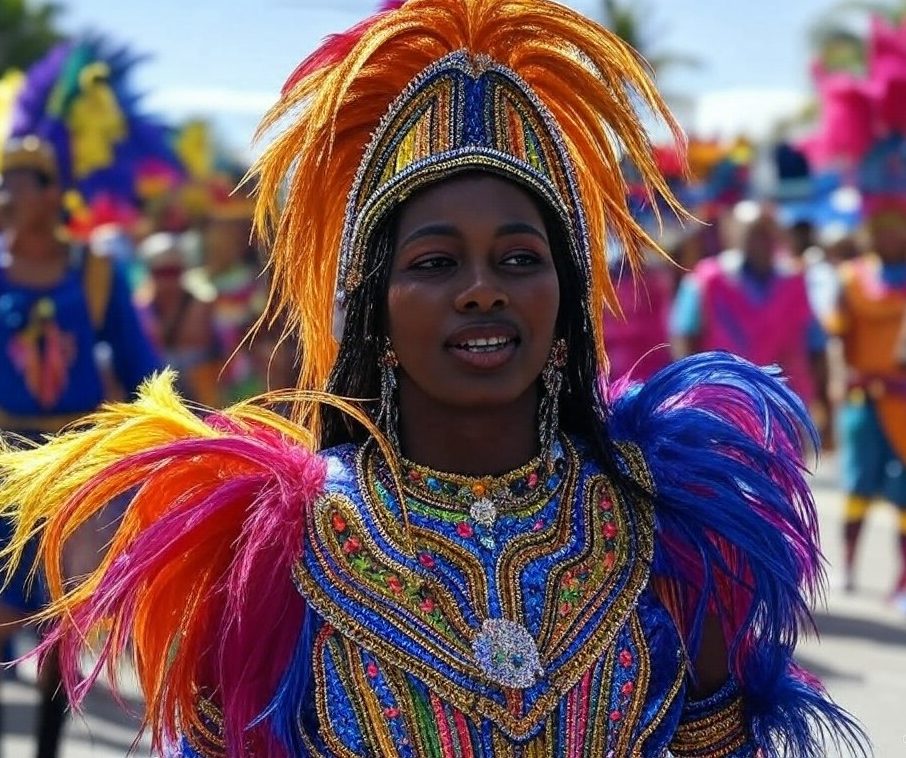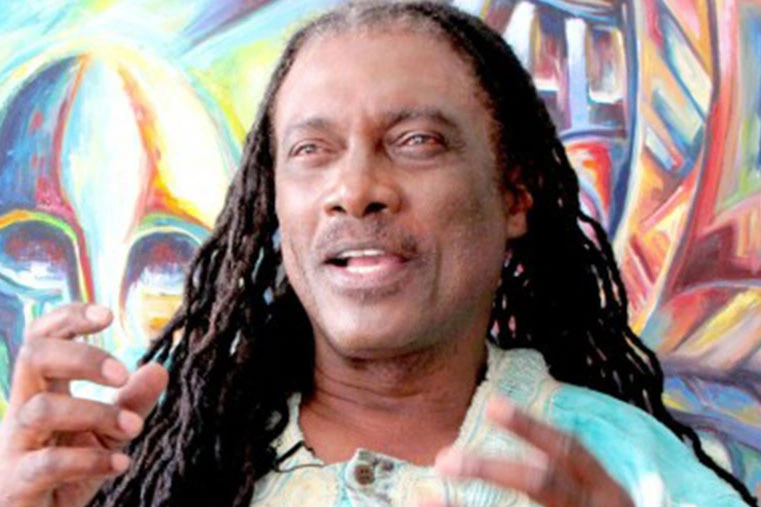1. Trinidad and Tobago
- Origins: Trinidad’s Carnival is one of the most famous in the world, with roots in the 18th century when French plantation owners held masquerade balls. Enslaved Africans, who were excluded from these events, created their own celebrations, blending African traditions with European influences.
- Evolution: After emancipation in 1834, Carnival became a celebration of freedom. Over time, it incorporated elements like calypso music, steelpan (invented in Trinidad in the 1930s), and soca (a fusion of soul and calypso in the 1970s). Today, it features elaborate costumes, “mas” (masquerade) bands, and lively street parades.
- Modern Carnival: Trinidad’s Carnival is a global attraction, known for its vibrant energy, competitions like the Calypso Monarch, and events like J’Ouvert, a pre-dawn street party.
2. Barbados (Crop Over)
- Origins: Crop Over began in the 18th century as a celebration marking the end of the sugarcane harvest. It declined in the mid-20th century but was revived in the 1970s.
- Evolution: The modern Crop Over festival blends traditional elements like the ceremonial delivery of the last canes with contemporary music, particularly calypso and soca. The festival now includes events like the Bridgetown Market, the Pic-O-De-Crop calypso competition, and the Grand Kadooment parade.
- Modern Carnival: Crop Over is a major cultural event in Barbados, attracting tourists and showcasing Bajan culture through music, dance, and costumes.
3. Jamaica (Bacchanal)
- Origins: Jamaica’s Carnival, known as Bacchanal, is relatively modern compared to other islands, with its roots in the 1990s. It was influenced by Trinidad’s Carnival and the growing popularity of soca music.
- Evolution: Bacchanal has grown into a major event, featuring road marches, costume bands, and soca and dancehall music. It is held in Kingston and Montego Bay, with events like J’Ouvert and the Road March.
- Modern Carnival: Jamaica’s Carnival is known for its high-energy parties, vibrant costumes, and fusion of soca with Jamaican dancehall music.
4. Haiti (Kanaval)
- Origins: Haiti’s Carnival, or Kanaval, dates back to the colonial period and is deeply tied to the country’s history and Vodou traditions.
- Evolution: Kanaval features parades, music (such as rara and compas), and satirical performances that often address political and social issues. It is celebrated in the days leading up to Lent, with the largest celebrations in Port-au-Prince and Jacmel.
- Modern Carnival: Despite challenges, Kanaval remains a vibrant expression of Haitian culture, with elaborate costumes, traditional music, and a strong sense of community.
5. Dominican Republic (Carnaval)
- Origins: The Dominican Republic’s Carnaval has roots in Spanish colonial traditions and is celebrated in February, leading up to Lent.
- Evolution: Each region has its own unique style, with the most famous celebrations in La Vega and Santo Domingo. Traditional characters like “Diablo Cojuelo” (Limping Devil) and “Roba la Gallina” (Chicken Thief) are central to the festivities.
- Modern Carnival: The Dominican Carnaval is a colorful mix of music, dance, and satire, with parades featuring elaborate masks and costumes.
6. Puerto Rico (Carnaval Ponceño)
- Origins: Puerto Rico’s Carnaval, particularly in Ponce, dates back to the 19th century and is tied to Catholic traditions.
- Evolution: The festival features parades, music, and traditional characters like the “Vejigantes,” masked figures representing evil spirits. Over time, it has incorporated more contemporary music and dance styles.
- Modern Carnival: Carnaval Ponceño is a lively celebration that blends tradition with modern elements, attracting both locals and tourists.
7. Cuba (Carnaval de Santiago de Cuba)
- Origins: Cuba’s Carnaval has African, Spanish, and Caribbean influences, with roots in the 17th century.
- Evolution: The Carnaval de Santiago de Cuba is the most famous, featuring conga music, traditional dances, and colorful parades. It has evolved to include modern music styles like salsa and reggaeton.
- Modern Carnival: Despite economic challenges, Cuba’s Carnaval remains a vibrant celebration of the island’s cultural heritage.
8. Martinique and Guadeloupe (Carnaval)
- Origins: These French Caribbean islands have Carnaval traditions influenced by French, African, and Creole cultures.
- Evolution: The celebrations include parades, music (such as zouk and biguine), and traditional characters like “King Vaval,” a figure symbolizing the spirit of Carnaval who is ceremonially burned on Ash Wednesday.
- Modern Carnival: Martinique and Guadeloupe’s Carnavals are known for their colorful costumes, lively music, and unique Creole traditions.
9. St. Vincent and the Grenadines (Vincy Mas)
- Origins: Vincy Mas evolved from traditional harvest festivals and was influenced by Trinidad’s Carnival.
- Evolution: The festival features calypso and soca music, street parades, and events like the Miss SVG pageant. It has grown into a major cultural event, showcasing Vincentian creativity and heritage.
- Modern Carnival: Vincy Mas is a vibrant celebration that highlights the island’s music, dance, and artistic traditions.
Common Themes in Evolution
- Cultural Fusion: Carnival celebrations across islands have evolved through the blending of African, European, and indigenous traditions.
- Modernization: Contemporary music, technology, and global influences have transformed Carnivals into larger, more commercialized events.
- Social and Political Expression: Many Carnivals serve as platforms for social commentary, satire, and cultural pride.
- Tourism: Carnivals have become major tourist attractions, contributing to the economies of many islands.
Each island’s Carnival is a unique reflection of its history, culture, and identity, making these celebrations a vibrant and dynamic part of the Caribbean and beyond.



